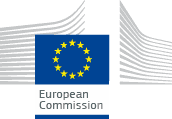Objectives
The overall objectives of the study would be to conduct an update of existing preparatory study according to MEErP methodology including:
-
An analysis of the possibility of merging implementing measures that cover the similar groups of products or extend the scope to include new product groups.
-
An assessment of the possibility of applying the "extended product approach" in setting ecodesign requirement, i.e. how requirements on air conditioners and fans could contribute to a less overall energy consumption of the complete product including its controls preferably in real-life conditions.
-
An assessment regarding resource efficiency – most likely disassembly, recyclability, reparability and durability following the adoption of the Circular Economy Package in December 2015 and the new Ecodesign Working Plan 2016-2019.
Focus of the review
The review focuses on the aspects that are mentioned in the Ecodesign revision clause (Article 7) of the Commission Regulation (EU) No 206/2012, which are:
-
the scope and the efficiency and sound power level requirements for air conditioners and comfort fans.
-
the approach to promote the use of low- global warming potential (GWP) refrigerants.
-
the inclusion of products currently not in scope, e.g. air conditioners above 12 kW rated output power.
-
the appropriateness of the standby and off mode requirements, seasonal calculation and measurement method, including considerations on the development of a possible seasonal calculation and measurement method for all air conditioners in the scope for cooling and heating seasons.
For the Commission Delegated Regulation (EU) No 626/2011 on Energy Labelling, this involves in particular the assessment of:
-
Significant changes in market shares of various types of appliances.
Timeline
The study started in February 2017 and is expected to finish in 2018. The list below gives an indicative timeline for the coming tasks. The timeline is subject to change and may be updated during the course of the study.
-
February 2017:Launch of study
-
May 2017: Draft interim report (Task 1 – 2 )
-
July 2017: Stakeholder meeting 1
-
Winter 2017: Draft final report (Task 1 – 7)
-
Late 2017: Stakeholder meeting 2
-
Medio 2018: Final report
Those who have registered through this website will be informed of website updates, meetings and availability of documents.
Any stakeholder meeting is subject to confirmation of room availability at the European Commission. Please do not make your travel arrangement before receiving the final agenda about 4 weeks prior to the meeting.
The Ecodesign Directive
Sustainable industrial policy aims in particular at developing a policy to foster environmental and energy efficient products in the internal market. The Ecodesign Directive 2009/125/EC is the cornerstone of this approach. It establishes a framework for the setting of ecodesign requirements for energy-related products with the aim of ensuring the free movement of those products within the internal market.
The Ecodesign directive itself does not set binding requirements: it provides a framework (rules and criteria) for setting such requirements through implementing measures. It is also possible to introduce information requirements for components and sub-assemblies.
Methodology
This study is conducted using the Methodology for Ecodesign of Energy-using products (MEErP) as established in 2011. This methodology was developed to allow evaluating whether and to which extent various energy-related products fulfil certain criteria according to Article 15 and Annex I and/or II of the Ecodesign Directive that make them eligible for implementing measures.
The methodology requires the contractor to carry out 7 tasks, ranging from product definition to policy scenario analysis.
The tasks in the MEErP entail:
-
Task 1 – Scope (definitions, standards and legislation);
-
Task 2 – Markets (volumes and prices);
-
Task 3 – Users (product demand side);
-
Task 4 – Technologies (product supply side, includes both BAT and BNAT);
-
Task 5 – Environment & Economics (Base case LCA & LCC);
-
Task 6 – Design options;
-
Task 7 – Scenarios (Policy, scenario, impact and sensitivity analysis).
Tasks 1 to 4 can be performed in parallel, whereas 5, 6 and 7 are sequential. Task 0 or a Quick-scan is optional to Task 1 for the case of large or inhomogeneous product groups, where it is recommended to carry out a first product screening. The objective is to re-group or narrow the product scope, as appropriate from an ecodesign point of view, for the subsequent analysis in tasks 2-7.
Energy-related products
Directive 2009/125/EC provides the following definition of energy-related products:
Article 2, item 1: "Energy-related product means any good that has an impact on energy consumption during use, which is placed on the market and/or put into service ...(including parts) ... of which the environmental performance can be assessed independently."
Involvement of stakeholders
The European Commission is dedicated in giving stakeholders the opportunity to provide input to this study thereby creating a fully transparent and open process. This website is the main information exchange platform between the study-team, the Commission and the stakeholders.
All documents will be freely available through this website. If you register as stakeholder you will receive notifications on website updates. Furthermore, as stakeholder, you can provide direct feedback to draft reports published on this website and make suggestions for energy-related products. Please note that your comments and suggestions may be made public on this website. You can also provide other non-public comments directly to the study team.

